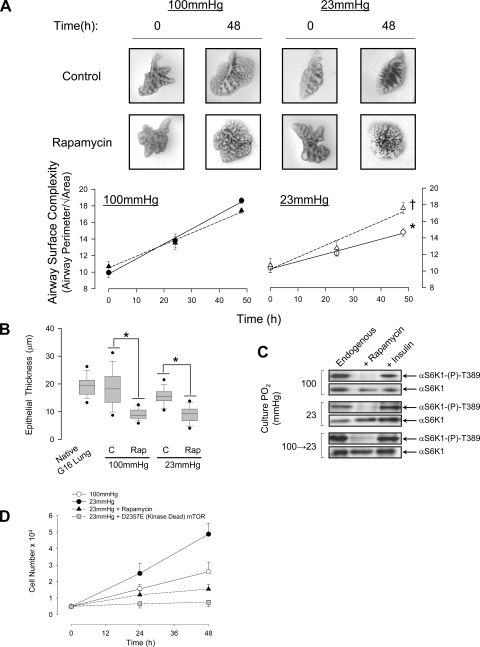Fig. 4.
Endogenous mTOR activity is critical for morphogenesis of fetal rat lung explants. A: influence of culture Po2 and rapamycin on airway surface complexity [ASC; perimeter/√airway area (46)] in lung explants from gestation day (G) 14 fetal rats. Circles, Control; triangles, 0.1 μM rapamycin. *P < 0.05 23 mmHg control vs. 100 mmHg control, n = 15; †P < 0.05 rapamycin vs. control at 23 mmHg, n = 15. B: box plots showing data distribution of epithelial thickness in G14 explants maintained for 48 h in the presence or absence of rapamycin (0.1 μM) at the indicated Po2. Measurements from G16 lung in situ are included for comparison (from bottom: 5th percentile, smallest nonoutlier, lower quartile, median, top quartile, 95th percentile. Bars indicate the data range). *P < 0.05, n = 4. One-way ANOVA on ranks with Dunn's post hoc test. C: endogenous activity of mTOR [αS6K-(P)-T389] in explants cultured in SFM for 48 h at fetal or alveolar Po2. Insulin (20 nM) was used as a positive control, and rapamycin (0.1 μM) was used to block mTOR activity. Representative of 4 replicates. D: growth rate of fetal rat lung fibroblasts determined over 48 h at fetal or alveolar Po2 in the presence of rapamycin or following overexpression of a kinase dead (D2357E) mutant of mTOR. *P < 0.05 relative to 23 mmHg treatment, n = 6.

